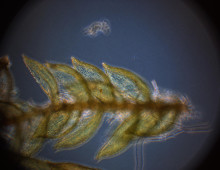Characterization of a Planctomycetal Organelle: a Novel Bacterial Microcompartment for the Aerobic Degradation of Plant Saccharides
Bacterial microcompartments (BMCs) are organelles that encapsulate functionally linked enzymes within a proteinaceous shell. The prototypical example is the carboxysome, which functions in carbon fixation in cyanobacteria and some chemoautotrophs. It is increasingly apparent that diverse heterotrophic bacteria contain BMCs that are involved in catabolic reactions, and many of the BMCs are predicted to have… [Read More]
